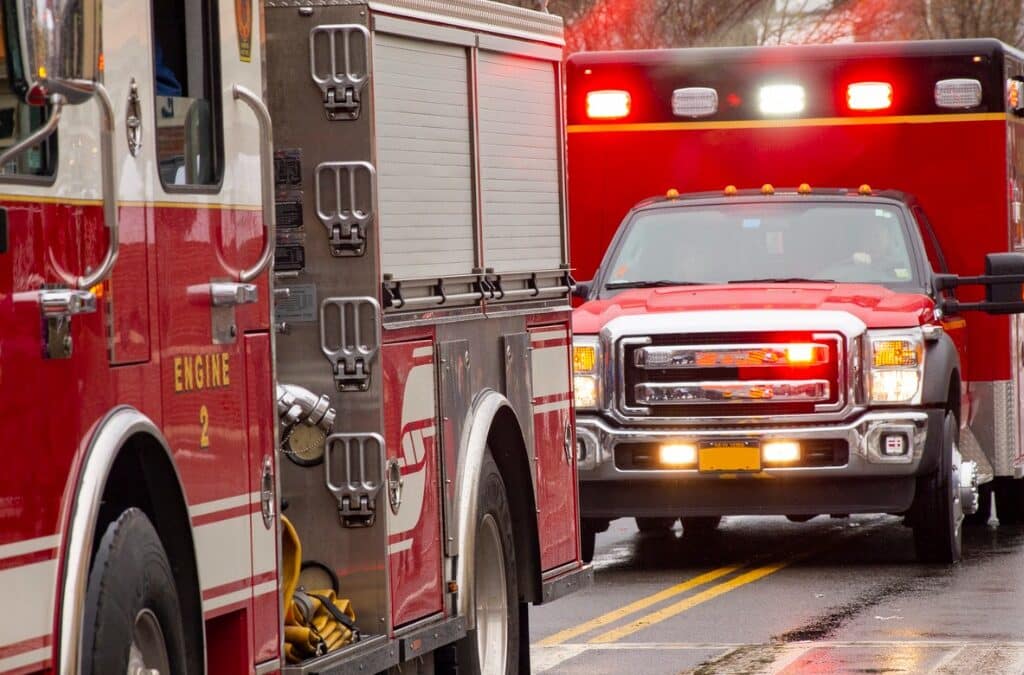Fast response times are critical when it comes to saving lives. Priority systems for emergency vehicles allow rescue services to move through traffic faster and more safely. These technologies ensure that traffic lights automatically switch to green as soon as an emergency vehicle approaches. But how exactly does this process work in real-world situations? This article explains the technology and its practical applications.
Priority switching explained
Emergency vehicle access is now enhanced through the use of advanced traffic data technology. Systems such as the Miovision Opticom™ emergency vehicle preemption enable vehicles like ambulances and fire engines to move through intersections without delay. This system works by automatically detecting the emergency vehicle and sending a signal to the traffic lights to grant it priority.
These preemption settings help drivers avoid making sudden, potentially dangerous maneuvers when an emergency vehicle is approaching. Instead, the system takes control of the traffic flow, reducing the likelihood of accidents that often occur due to unpredictable driver behavior in response to emergency vehicles. This ensures a safer and more efficient passage for both emergency services and other road users.
Time advantage: Getting there faster, with fewer delays
The implementation of traffic-enforcement systems for emergency vehicles has had a significant impact on the response times of emergency services in cities such as Los Angeles, Toronto and London. In Los Angeles, it has been reported that priority-setting technology has reduced response times by an average of 10 seconds. This seemingly small improvement can be crucial in life-threatening situations, especially when traffic is heavy. In Toronto, the average response time of fire engines could be reduced by up to 25%, which can make the difference between life and death.
London has also made significant progress with intelligent traffic control. Here, ambulance response times were reduced by almost 2 minutes when they were given priority over general traffic. Such measures are particularly crucial in high-risk emergencies, such as heart attacks.
Time is of the essence for emergencies like heart attacks
In particular, for emergencies like heart attacks, seconds count for life or death. Studies show that for every minute that passes without resuscitation, the chances of survival for a person with a heart attack decrease by 7-10%. When emergency responders arrive faster due to priority treatments, the chances of survival increase significantly. Experts recommend that heart attack victims receive treatment within 4–6 minutes to avoid irreversible damage. In London, the smart traffic light control shortens the time to arrival by several minutes, drastically increasing the chances of successful resuscitation.
Benefits for drivers and road users
The implementation of emergency traffic light control for emergency vehicles has helped to significantly reduce the number of accidents involving emergency vehicles in many cities around the world. In the US, for example, there are approximately 6,500 accidents involving ambulances annually, with approximately 35% resulting in injuries or fatalities. There were also approximately 15,675 reported accidents involving fire engines in 2020.
The use of technologies such as emergency priority can significantly reduce these numbers by intelligently managing traffic at intersections. In the United States, studies show that the use of these technologies can reduce emergency vehicle crash rates by up to 50%. These systems work by slowing traffic or turning traffic lights green for approaching emergency vehicles. This means that drivers no longer have to react hectically to sirens, which in turn significantly increases safety at intersections.
A total of 224 people die each year in accidents involving emergency vehicles. Almost half of these deaths are occupants of non-emergency vehicles involved in these collisions. By using modern priority technologies, cities worldwide can not only increase safety for emergency services, but also improve safety for all other road users.

